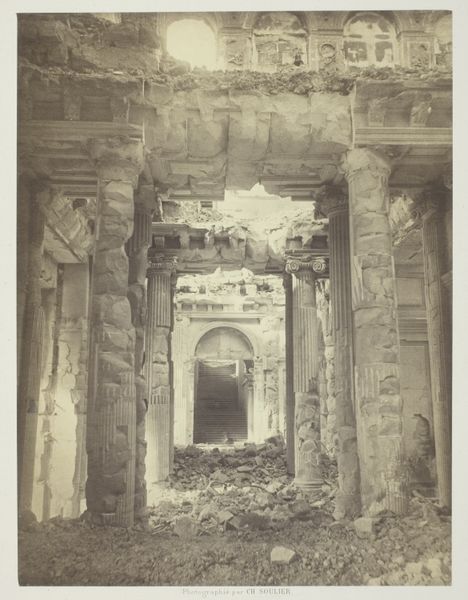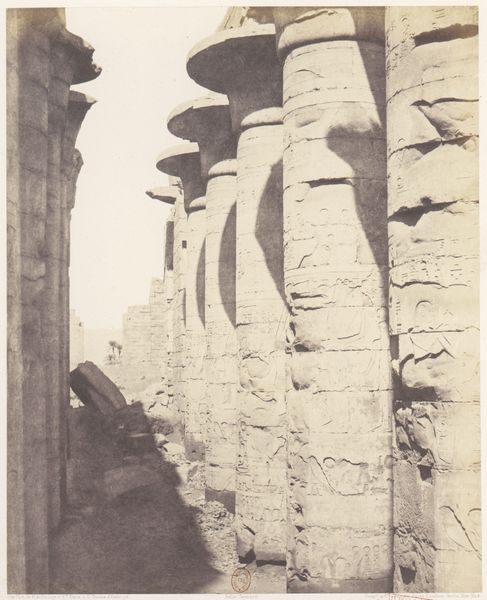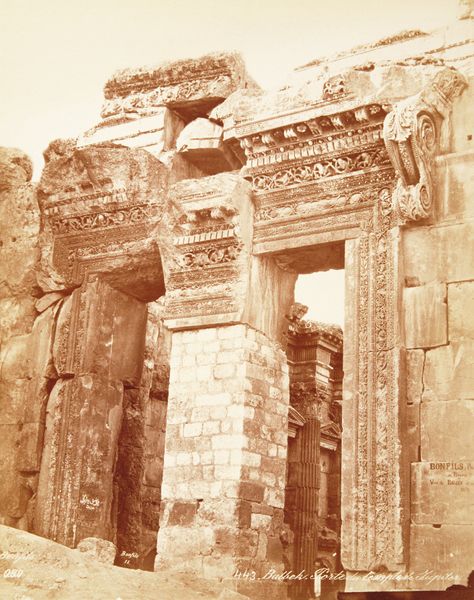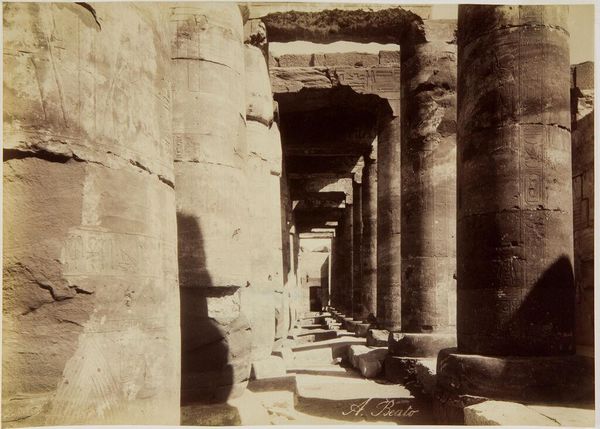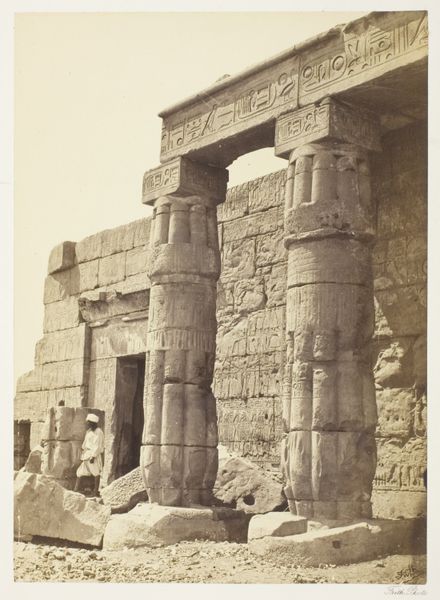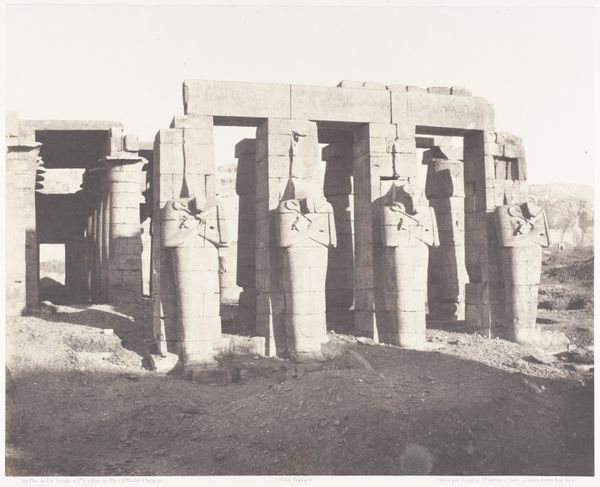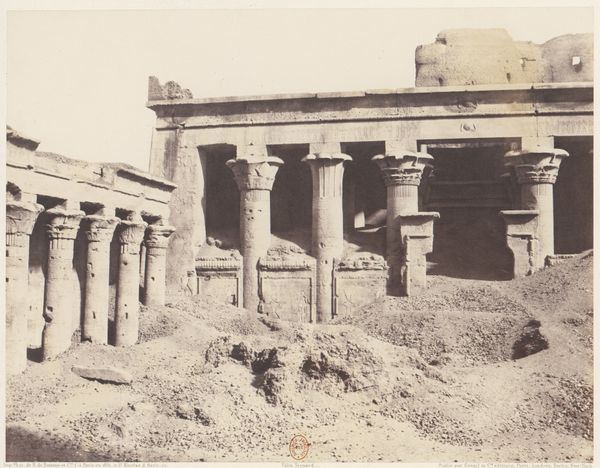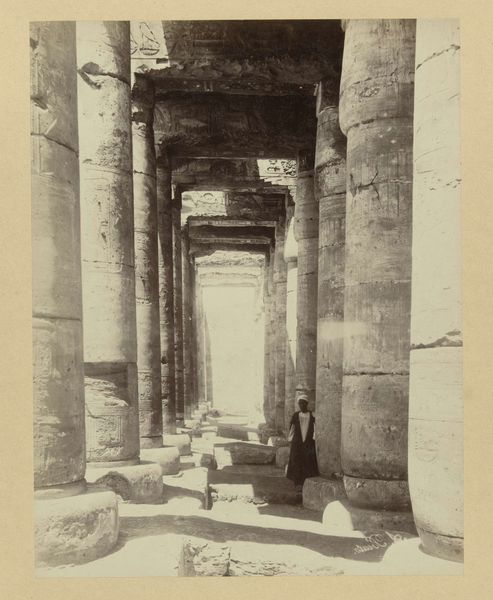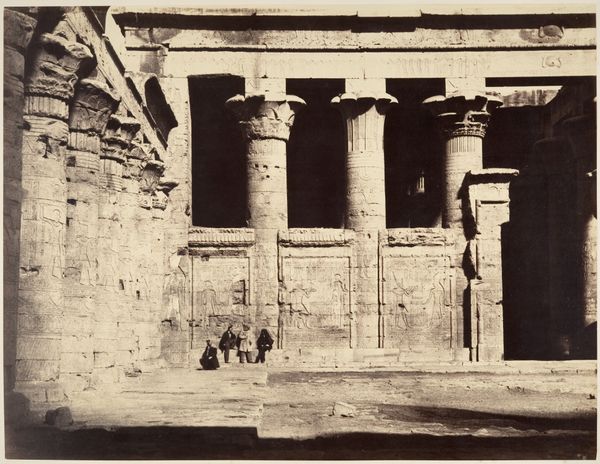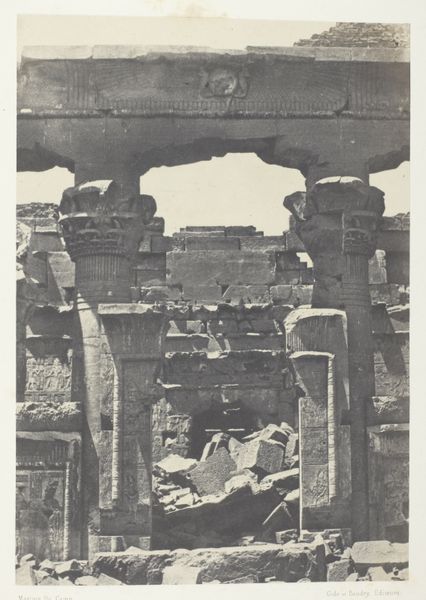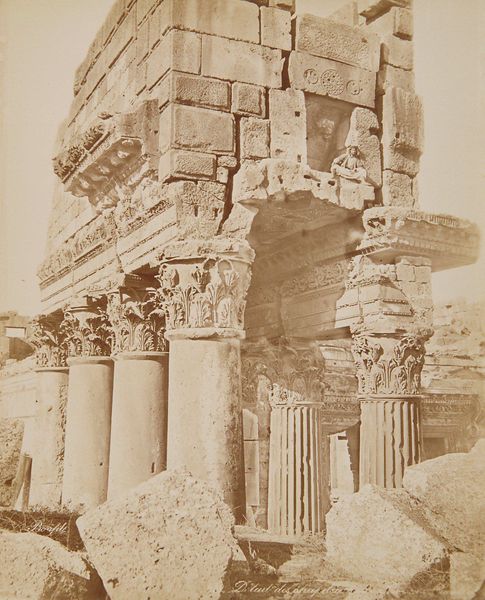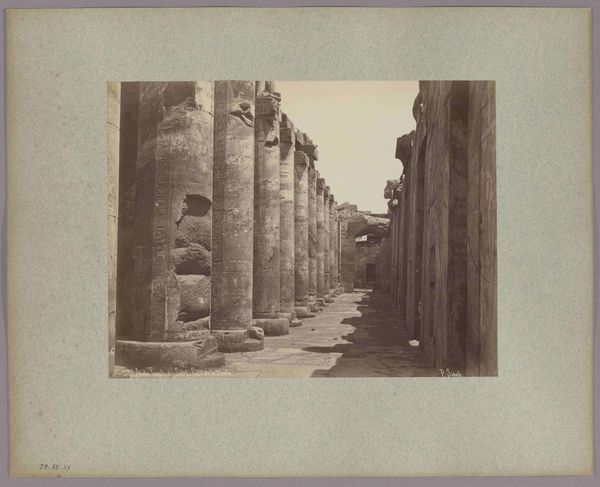
Karnac, Grande Allée du Milieu des Ruines, Prise de l'est 1859 - 1860
0:00
0:00
print, photography
# print
#
landscape
#
ancient-egyptian-art
#
photography
#
ancient-mediterranean
Dimensions: 28 × 20.9 cm (image/paper); 57.8 × 45.8 cm (mount)
Copyright: Public Domain
Curator: Louis de Clercq crafted this photograph, "Karnac, Grande Allée du Milieu des Ruines, Prise de l'est," between 1859 and 1860. It captures a section of the Karnak Temple complex in Egypt. Editor: My initial reaction is one of stillness. It’s not just the ruins themselves, but the way the light and shadow fall across the stones creates a quiet, almost meditative space. Curator: That's insightful. Consider that 19th-century Europeans were experiencing a surge of interest in ancient cultures, which directly reflected the rise of colonial power, including what some theorists have deemed orientalism and how Western perspectives historically imposed themselves upon these sites. How might that affect our understanding of a photograph like this one? Editor: Certainly. There's a powerful interplay of symbols here. The towering stone, even in its ruined state, suggests endurance, almost a defiance of time. These pillars reference the civilization's sophistication, belief system and mastery of engineering; each ruin silently echoes stories of rituals, power struggles, and communal life. It invokes what Carl Jung defined as collective memory. Curator: Right, the photographic act itself reflects that impulse to document, catalog, even possess a part of that past. De Clercq wasn’t just creating an image; he was participating in a much larger political project that intersected art, science, and imperialism. The choice to focus on the ruined gateway evokes a sense of mystery and perhaps speaks to the broader narrative of "fallen empires" and Western ideals of cultural superiority. Editor: Yes, though to me, this shot captures a somber, solemn respect. These places of ancient worship and living were very carefully created, very important. Even in its destruction, that remains apparent and gives clues to who this civilization was, who its people were. It begs the question of the transience of power itself. All empires rise and fall; all structures eventually crumble. Curator: True, that contrast forces a dialogue. The photograph serves as a reminder to challenge narratives of power, considering that historical context of how it frames Egypt, its land, and its culture for a European audience. Editor: A thought-provoking image, filled with rich historical and visual layers to ponder. Curator: Indeed, offering more than a scenic snapshot and prompting us to consider both our historical position and ethical considerations in seeing it.
Comments
No comments
Be the first to comment and join the conversation on the ultimate creative platform.
